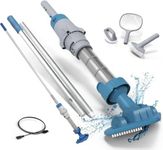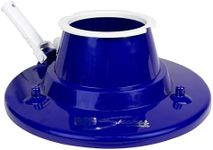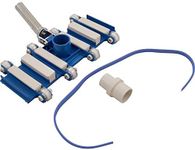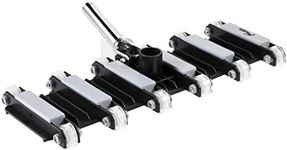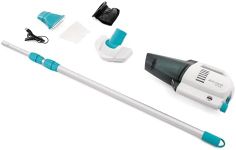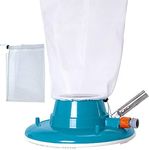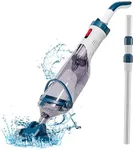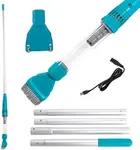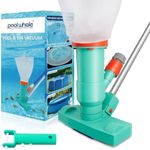Buying Guide for the Best Manual Pool Vacuums
Choosing the right manual pool vacuum can make maintaining your pool much easier and more efficient. A manual pool vacuum allows you to clean your pool by hand, giving you control over the cleaning process. When selecting a manual pool vacuum, it's important to consider several key specifications to ensure you get the best fit for your needs. Here are the key specs to look out for and how to navigate them.Vacuum Head TypeThe vacuum head is the part of the vacuum that comes into direct contact with the pool surface. It is important because it determines how effectively the vacuum can clean different surfaces. There are two main types: flat and weighted. Flat vacuum heads are lighter and easier to maneuver, making them suitable for above-ground pools or pools with delicate surfaces. Weighted vacuum heads are heavier and provide better suction, making them ideal for in-ground pools with tougher debris. Choose a vacuum head type based on the type of pool you have and the kind of debris you typically encounter.
Hose LengthThe hose length determines how far you can reach with the vacuum without having to move the entire setup. This is important for ensuring you can clean the entire pool efficiently. Hoses typically range from 25 to 50 feet. For smaller, above-ground pools, a shorter hose may be sufficient. For larger, in-ground pools, a longer hose will be necessary to reach all areas. Measure your pool and choose a hose length that allows you to reach the farthest corners without difficulty.
Hose DiameterThe hose diameter affects the flow rate of water and debris through the vacuum. This is important because a larger diameter can handle more debris and provide better suction. Common diameters are 1.25 inches and 1.5 inches. For pools with fine debris like sand or silt, a smaller diameter may be adequate. For pools with larger debris like leaves or twigs, a larger diameter is preferable. Consider the type of debris you need to clean when selecting the hose diameter.
Brush TypeThe brush type on the vacuum head helps to dislodge dirt and debris from the pool surface. This is important for ensuring a thorough clean. Brushes can be made of nylon, rubber, or stainless steel. Nylon brushes are gentle and suitable for vinyl or fiberglass pools. Rubber brushes are more durable and can handle tougher debris. Stainless steel brushes are the most abrasive and are best for concrete or plaster pools. Choose a brush type that matches the material of your pool surface to avoid damage.
Telescopic Pole CompatibilityA telescopic pole allows you to extend the reach of your vacuum, making it easier to clean different areas of the pool. This is important for convenience and efficiency. Most manual pool vacuums are compatible with standard telescopic poles, but it's important to check the compatibility before purchasing. Consider the depth and size of your pool when selecting a pole. A longer pole will be necessary for deeper or larger pools, while a shorter pole may be sufficient for smaller or shallower pools.
